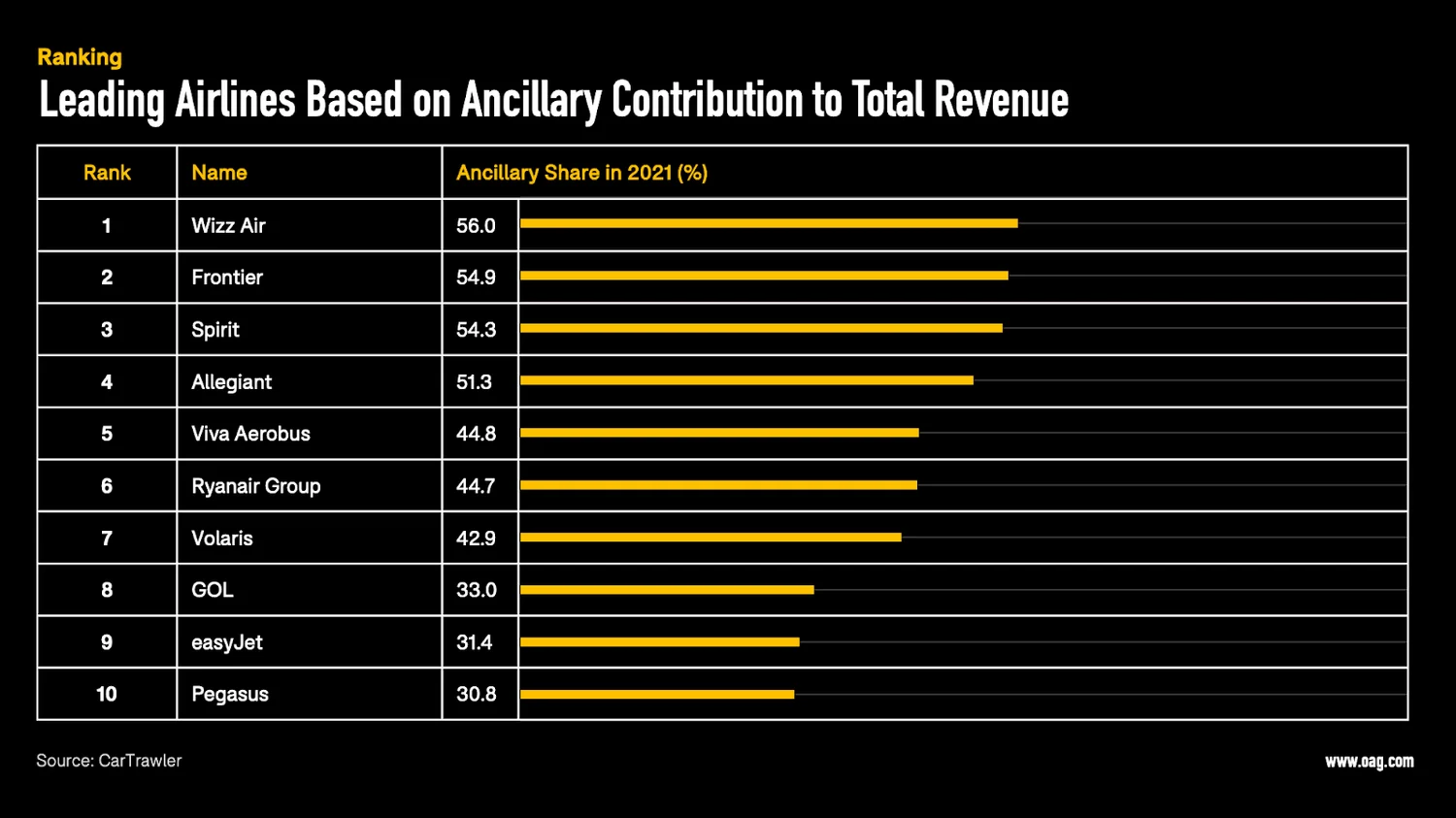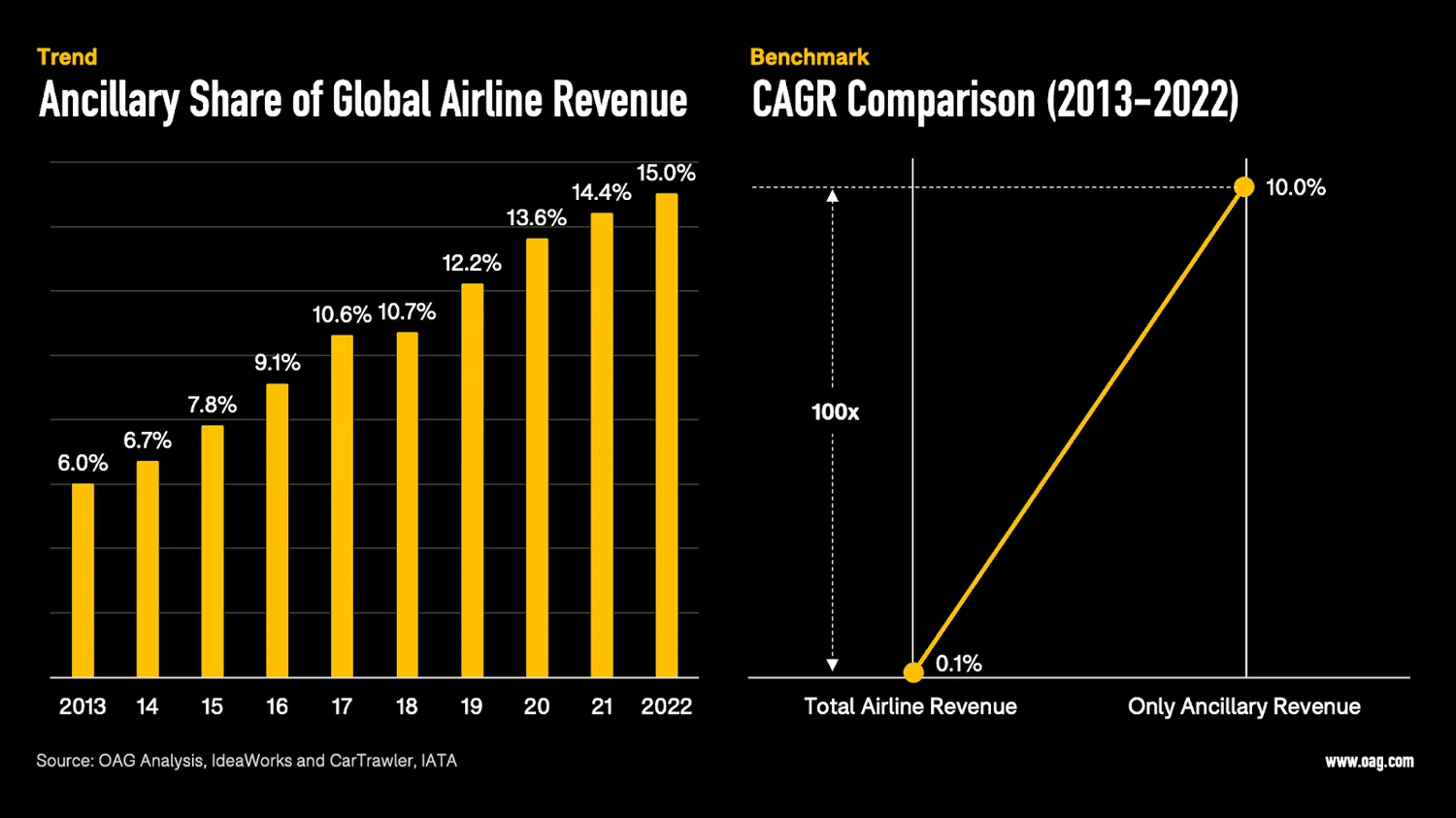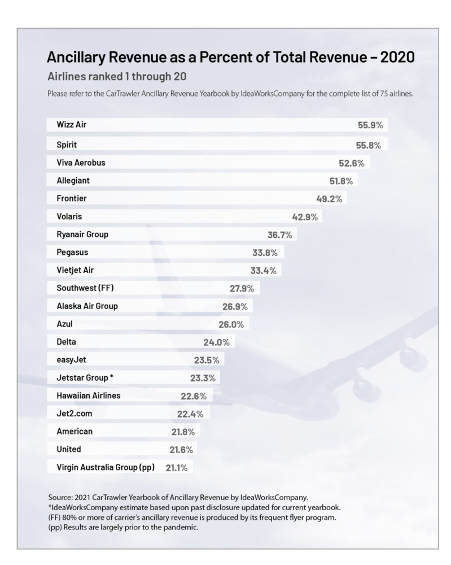The dynamics of the travel and tourism industry are constantly shifting. The COVID-19 pandemic put a halt on business and leisure travel, limiting the sector’s growth. Once it started bouncing back, it was hit again. But this time by rising prices of goods, such as fuel, staffing issues, international conflicts, and unstable economic situations, among other problems.
Travel and tourism companies have been struggling, and as Deloitte’s 2024 travel industry outlook analysis suggests, “they [will] need to improve the experiences they offer or risk losing travellers’ attention.”
One strategy that’s gaining traction in various industries is the use of ancillary services. But what exactly are ancillary services and how can they contribute to revenue growth? In this blog, we’ll explore those topics and show how eSIM and Embedded Connectivity can boost ancillary revenue by $100+ million.
TL;DR
- Ancillary revenue is the income generated through the selling of supplementary products and services.
- Ancillary revenue is important because it plays a vital role in businesses’ overall revenue strategy as it:
- enables them to diversify revenue streams.
- increase profitability.
- improve the overall customer experience.
- Ancillary revenue comes from ancillary services that can be defined as additional services that complement a company’s main offering, such as extra baggage for flights and travel insurance.
Ancillary services definition
Ancillary services represent those additional offerings that complement the core services provided by a business. They serve to enrich customer experiences, often leading to increased satisfaction and loyalty.
For example, the core services of accommodation providers, such as Marriott, Travelodge, or Airbnb, are accommodation or lodging services. Ancillary services in hotels, on the contrary, include:
- Food and beverages
- Spa and wellness facilities, such as massages, yoga classes, and beauty treatments
- Dining options, including in-house restaurants, bars, room service, and catering services for events and meetings
- Conferences ad banqueting
- Transportation services, such as shuttles or valet parking options
- Laundry and dry-cleaning services
- Technology services like Wi-Fi or in-room entertainment options, such as streaming services or gaming consoles
Ancillary services in the travel and tourism sector lead to plenty of benefits for both travel operators and their customers:
For travel operators:
- Opportunities for diversifying revenue streams – Ancillary services provide businesses with additional streams of revenue diversifying and stabilising income and reducing reliance on a single source of revenue.
- Increased profitability – travel operators can capitalise on upselling opportunities and increase their profit margins. According to research, ancillary services often have higher profit margins compared to core products (see graphic below).
- Differentiation from competitors – Offering unique value-added ancillary services can set businesses apart from competitors in the market by helping them attract and retain customers more effectively.
- Cross-selling and Upselling Opportunities – This can lead to increased average transaction values and higher overall sales volumes.
- Adaptability and Innovation – Introducing new ancillary services allows businesses to stay agile and innovative in response to changing market trends and customer preferences. This flexibility enables businesses to remain competitive and relevant in dynamic industries.

Source: OAG
For customers:
- Increased convenience – ancillary services that successfully complement the primary needs save customers’ time and improve their overall experience.
- Personalisation – a range of ancillary services cater to diverse needs and allow end-users to customise their experience according to their preferences and requirements.
- Comprehensive solution – By bundling core products with supplementary offerings, businesses can provide customers with solutions that address multiple aspects of their needs or requirements. Providing them with well-rounded all-inclusive solutions that simplify the decision-making process.
What is ancillary revenue?
Having determined what ancillary services are, we can now move on to define ancillary revenue.
Ancillary revenue is the income generated through the selling of supplementary products and services. It plays a significant role in various industries, including travel, hospitality, retail, telecommunications, and entertainment.
Why is ancillary revenue important? It plays a vital role in businesses’ overall revenue strategy as it enables them to diversify revenue streams, increase profitability and improve the overall customer experience.
In many cases, ancillary revenue surpasses the revenue generated from core services. Let’s start with the above-mentioned airline industry.
The trend mainly applies to low-cost carriers providing cheap fares but offering a broad range of ancillaries, such as luggage allowances, seat selection, in-flight meals, or priority boarding.
Arguably, this approach allows for diversification and personalised services and contributes to the evolution of the industry.
“Over the span of less than a decade, global ancillary revenues dramatically rose from $42.6 billion in 2013 to over $102 billion in 2022. Even more impressive, 2022’s figures almost matched 2019’s record of $109.5 billion, despite the disruptions caused by the global pandemic.” – OAG

Source: OAG
In 2020, 4 low-cost carriers made over 50% of their total revenue from ancillary services:
- Wizz Air – 55.9%
- Spirit – 55.8%
- Viva Aerobus – 52.6%
- Allegiant Airlines – 51.8%.
 Source: IdeaWorksCompany
Source: IdeaWorksCompany
But that’s not only the case in the airline industry. Ancillary revenue accounts for the majority of the revenue in other businesses too:
- Theme parks – Theme parks like Disneyland and Walt Disney World generate a significant share of their overall revenue from sales of food and beverages, merchandise, photo packages, and VIP experiences.
- Online travel agencies – Booking Holdings, the parent company of Booking.com, among others, generates ancillary revenue through commissions and fees from various travel-related services, such as car rentals, travel insurance, and activities and tours that often outweigh the revenue earned from booking fees or commissions on airfare.
- Gyms – The ancillary revenue here is generated through the sales of merchandise, personal training sessions, nutritional supplements, and special events or classes. Similarly to the above examples, it often exceeds the core revenue generated from membership fees or monthly dues.
How can eSIM help boost ancillary revenue?
One of the common ancillary services is technology add-ons. As discussed earlier, they take the form of complimentary Wi-Fi or streaming services. However, to differentiate and stay ahead of the competition, businesses need to think past the obvious options. One of them is eSIM.
What is eSIM?
An eSIM, or embedded SIM, is a digital SIM card embedded directly into a device, such as a smartphone or tablet, eliminating the need for a physical SIM card. It allows users to switch between mobile carriers without needing to physically swap SIM cards, offering greater flexibility and convenience in managing mobile connections.
RECOMMENDED READING
Thanks to eSIM technology being available in the consumer market, all industries, not only telecom, can reap the benefits of it. That’s where Embedded Connectivity comes in.
Embedded Connectivity refers to the integration of communication capabilities into any service provider in any industry, enabling them to connect to networks such as the Internet without the need for external or additional hardware.
Embedded Connectivity can be seamlessly applied to any app, any industry, anywhere, providing service providers willing to think outside the box to differentiate in their competitive field.
We recently discovered that an average low-cost airline could boost its ancillary revenue by $100+ million per year by embedding connectivity through eSIM. Read our (theoretical) eSIM for airlines case study to find out more.
Embedded Connectivity Solution
With the right solution, Embedded Connectivity can be implemented in a breeze. At Mobilise, we have a solution that does just that.
Our Embedded Connectivity SDK offers plenty of advantages to service providers wanting to boost their ancillary revenue. It stands out as a seamless “plug-and-play” solution, seamlessly integrating into existing apps without the need for extensive customisation.
With minimal setup costs and swift implementation, typically completed within a week, our eSIM SDK enables service providers to present eSIM packages as an ancillary service to their clientele.
Featuring in-app eSIM activation in under 60 seconds without the hassle of QR codes or physical SIM swapping for the end-users.
Conclusion
In the competitive landscape of modern business, ancillary services represent a strategic avenue for revenue diversification and customer engagement. By embracing innovative solutions such as eSIM technology, companies can elevate their ancillary offerings, drive incremental revenue growth, and solidify their position as industry leaders.
Don’t miss out on the opportunity to unlock the full potential of ancillary revenue with Embedded Connectivity. Contact us today to explore the possibilities!



